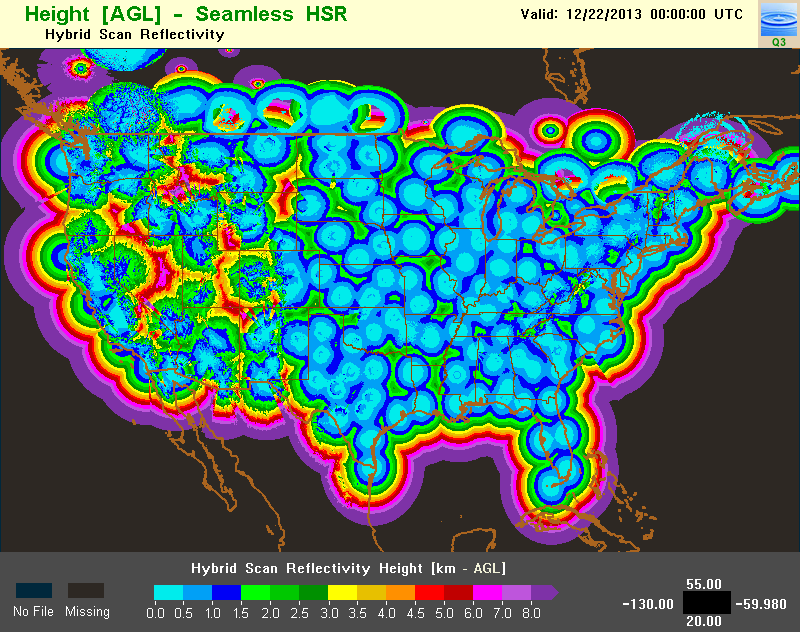Height of SHSR - Warning Decision Training Division (WDTD)
Navigation Links
Products Guide
Height of SHSR
Short Description
The height associated with the SHSR field
Subproducts
None.
Primary Users
NWS: WFO, RFC
Input Sources
Radar location (lat/lon, antenna horn height above mean sea level), radar data bin coordinates (range, azimuth, elevation angle), Seamless Hybrid Scan Reflectivity (SHSR) product
Resolution
Spatial resolution: 1km x 1km
Temporal resolution: 2 minutes
Product Creation
The bottom height of each SHSR data bin is defined as the height associated with the SHSR (H-SHSR). The H-SHSR is mosaicked using the same process as the SHSR (see QPE Mosaic Process). An example of this mosaicked product is shown in Figure 1.
Technical Details
Latest Update: MRMS Version 10
Accessible on: MRMS Development site
References
Other MRMS product documentation: Seamless Hybrid Scan Reflectivity




